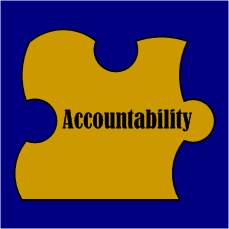Florida to Review All Child Abuse Deaths

“In one year, the number of Florida child abuse deaths dropped 30 percent, from 197 to 136, according to a tally by the state.
The dip between 2009 and 2010 seems remarkable, but wasn’t due to a massive campaign to prevent child abuse deaths. Rather, it’s because the state changed the way it categorized such deaths. Only a fraction of Florida’s 2,282 overall child deaths in 2010 were labeled as abuse by a network of investigators whose training and approach can vary. The state child abuse death review team – which compiles the tally – is only forwarded cases that the local investigators determine to be abuse.
But Department of Children and Families Secretary David Wilkins said late Friday his agency would allow the independently run team to review all child deaths starting immediately.
“It became very apparent that if (the review team) is going to give policy and direction, they have to have all the information. Otherwise we’re filtering the information for them and inadvertently influencing their points of view,” Wilkins said.
Wilkins said the agency had been looking at the issue for awhile, but the announcement came shortly after records requests from The Associated Press and The Miami Herald examining the issue.
Just before the dip, former DCF director of family safety Alan Abramowitz sent out a draft policy in 2010 narrowing guidelines for how to classify drowning and the deaths of children sleeping with parents known as co-sleeping deaths, saying there had to be a willful act of a caregiver to be considered neglect. Although it was never became policy, investigators unofficially followed it. Abramowitz said the guidelines were intended to improve consistency. He left the agency to head the state’s Guardian Ad Litem program in 2011.
The classifications have sometimes put the child death review team at odds with DCF because the team has repeatedly pushed to review all child death cases, saying it removes politics from the process and gives authorities a more accurate picture to help prevent future deaths.
“It’s been an ongoing problem. There were inconsistencies across the state where it really came down to a person making a judgment of what deaths they wanted verified in their area or not. The danger of that is that it can lead to more abuses simply because one person decides they don’t want to verify certain deaths anymore,” said Dr. Mike Haney, former head of the state review team. “The whole system allows itself to be manipulated.”
Drowning and co-sleeping deaths can be problematic categories. They are vulnerable to being written off as tragic accidents because they are less obvious than beating or other trauma deaths. The categorization of the death can determine whether anyone faces charges, a deterrent to future abuse or neglect.
“We had some circuits that verified every swimming drowning death and some that didn’t verify any, and the inconsistencies created problems for the review team,” said Abramowitz, who was on the team for two years.
Co-sleeping deaths were cut in half from 42 in 2009 to 21 in 2010 and drowning deaths dipped from 59 to 42 during that same time, according to the report.
Investigators have historically been reluctant to verify drowning as neglect deaths, even when there’s evidence of pill bottles and drug paraphernalia at the scene. It’s easier to write them off as accidents and investigators often don’t want to further traumatize parents by asking them to submit to a drug test.” [Seriously? They PURPOSELY didn’t investigate those cases ?]
A report last year from the Government Accountability Office also warned America uses flawed methods to tally and analyze the deaths of children who have been maltreated, and the latest annual estimate of 1,770 such fatalities is likely too low. ”
Fla. to review all child abuse deaths
[The Miami Herald 5/26/12 by Kelli Kennedy]
REFORM Puzzle Piece


Recent Comments